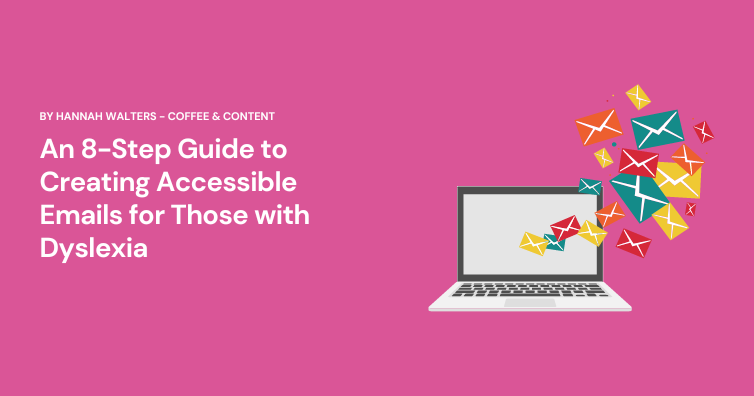Guide to Creating Accessible Emails for Those with Dyslexia

When it comes to dyslexia, emails can be a real challenge. From getting the layout just right to knowing how to make the content dyslexia-friendly, it’s important to understand how dyslexic people interact with emails differently.
Being dyslexic can make reading emails difficult due to the way that words and phrases are presented in a text. Emails often contain complex syntax, with multiple clauses and sentences strung together, making it difficult for dyslexics to understand what is being conveyed. They may also have difficulty due to the small fonts and lack of font variety used in many emails. Furthermore, emails often contain long paragraphs of text which can prove confusing and overwhelming for those with dyslexia, making it hard for them to stay focused when reading through an email.
This article will give you an understanding of the importance of accessibility for those with dyslexia, as well as a step-by-step guide on how to improve readability:
Step One: Understand dyslexic people’s experience with emails.
Dyslexics can often struggle to read emails, especially if the font is small or difficult to distinguish from each other. Additionally, they may have some difficulty understanding certain words or phrases, so using dyslexia-friendly language is essential.
Step Two: Think about colour contrast.
People who are dyslexic are more likely to struggle with emails that have a high contrast between text and background colours, so it’s important to choose colours that will be comfortable and improve readability. Additionally, dyslexic people may find it helpful to increase the text size or use a dyslexia-friendly font.
Step Three: Use dyslexia-friendly language.
Dyslexic readers may not be able to understand certain words or phrases, so it’s important to choose dyslexia-friendly language when writing emails. Avoiding jargon and using simple language can help dyslexic readers understand what you’re trying to say more easily.
Step Four: Listen to dyslexic feedback.
It’s important to actively listen to dyslexic users when it comes to emails, as they may be able to provide valuable insight into what dyslexic readers need to be able to understand emails.
Step Five: Test emails for dyslexic users.
Finally, make sure to test your emails with dyslexic users before sending them out. This will help ensure that they are dyslexia-friendly and that dyslexic readers can understand them easily.
Step Six: Use dyslexia-friendly fonts.
When creating emails, it’s important to use dyslexia-friendly fonts that are easy to read and distinguish from one another. This will make the text easier for dyslexics to understand and follow. Some examples of dyslexia-friendly fonts are Open Dyslexic, Dyslexie, and Comic Sans.
Step Seven: Break the text into smaller chunks.
Long paragraphs of text can be confusing and overwhelming for dyslexics, so it’s best to break the content up into shorter sentences and paragraphs. Doing this will make the email easier to understand and follow for dyslexic readers.
Step Eight: Include images.
If appropriate, include visuals and/or graphics to supplement your email content. This can make it easier for dyslexics to understand what you’re trying to convey, as they may not be able to process large amounts of text at once.
By following these steps and understanding dyslexia accessibility, you can improve the readability of emails for dyslexics. This will not only help dyslexics to understand emails better but also show them that their needs are being recognised and considered.
Remember, dyslexic people have the same right to access emails as everyone else, so it’s important to make sure that your emails are dyslexia-friendly and accessible for all. With these tips in mind, you can ensure that your emails are dyslexia friendly and accessible to everyone.
This blog was writen by Hanah Walters.¸
